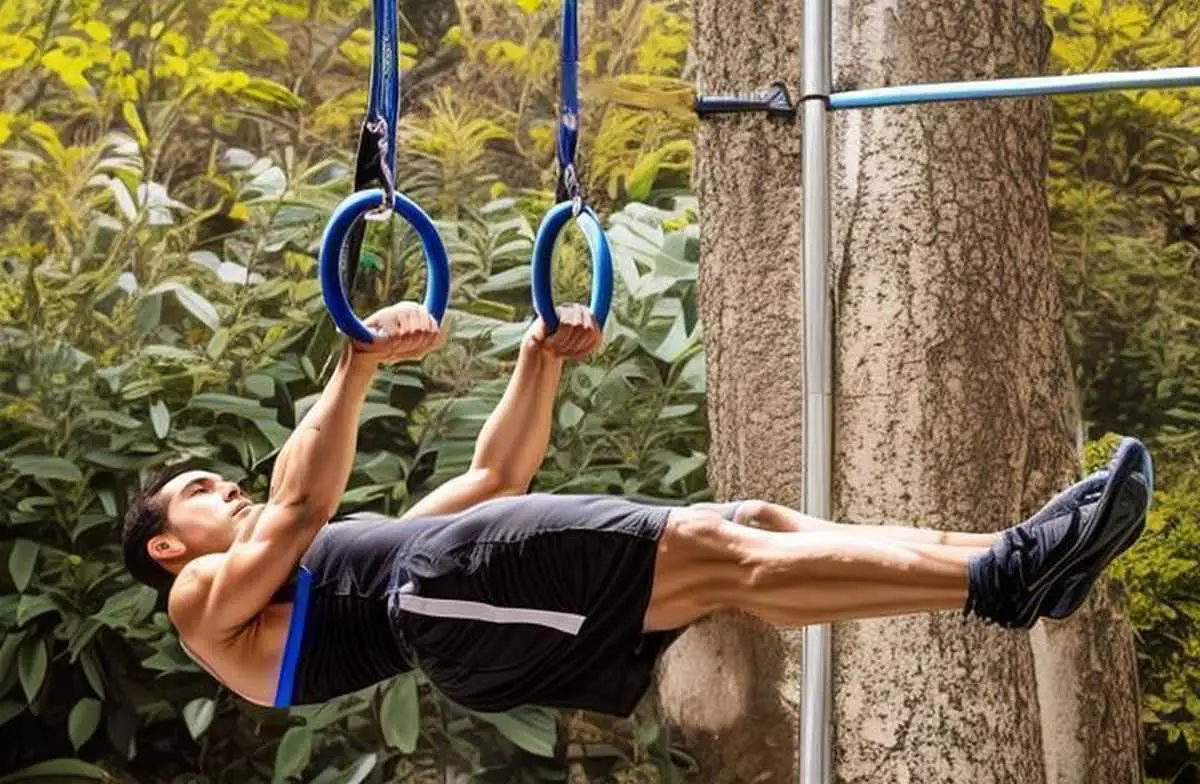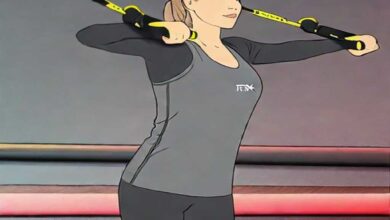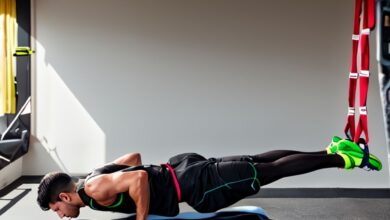Step into the world of gravity-defying strength and body control with the TRX Front Lever. In this post, we unravel the artistry of suspension training, focusing on this captivating maneuver that epitomizes control and athleticism.
TRX front lever is an advanced skill requiring functional strength in the lats and abs. Hence, it is recommended to first master isolated moves that target these muscle groups before trying TRX front lever. Other than that, we go through a phased approach that starts with TRX tuck front lever and gradually progresses to the full TRX front lever.
Table of Contents
Tuck Front Lever Progression
How to do: As you tuck your knees close to your chest, your lats—the back’s powerful muscles—take the lead, pulling your hips to the same height as your shoulders. Aim to hold the front lever for 10–15 seconds.
As you advance through the progressive stages, you’ll find that the Tuck Front Lever provides the firm foundation upon which the intricate mastery of TRX Front Lever is built. Each stage of TRX front lever progression may take a while to master. So, be patient and gradually build strength at each stage before moving to the next.
Open Tuck Front Lever
Once you can build strength to hold about 10 seconds in that pose, partially extend your legs from hips level until your thighs become almost perpendicular to the ground or beyond that. This position is called Open Tuck Front Lever, making the exercise more challenging.

If you couldn’t hold the front lever with tucked knees, using a band around the lower back can assist with the move. Another option is to bring the hips higher than the shoulders level so that the tension imposed on the back muscles is reduced.
Please note that some of the links on this website are affiliate links, which means that we may earn a commission if you click on the link and make a purchase. This won’t cost you anything extra.
Resistance bands are useful for band-assisted front lever. They can be used in various other calisthenics exercises, such as Pole Fitness, Pull-Ups, Upper and Lower Body Exercises, and Stretching.
They are made of Natural Latex Rubber in 7 unique sizes. All bands are 41″ (104 cm) and range in resistance from 5 to 200 lbs (2-90 kg).
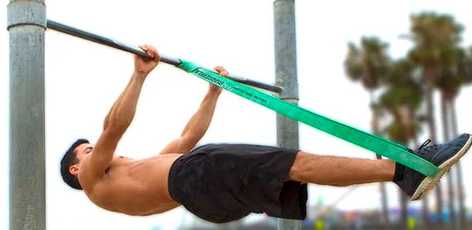
Like many other TRX exercises, you can do the TRX front lever using gymnastic rings or pull up bar instead of TRX. A pull up bar that is suitable for front lever should have enough space below it to allow you fit horizontally. Therefore, a stand alone pull up rack is more suitable than a wall attached bar for this move.
Elevate your fitness journey to new heights with Gymnastics Wood Rings. Crafted for an exceptional grip that feels luxurious and comfortable, these rings offer a premium training experience that surpasses ordinary plastic or metal alternatives. Engineered for durability, they are your unwavering support, capable of handling any weight and intensity, ensuring you can confidently train.
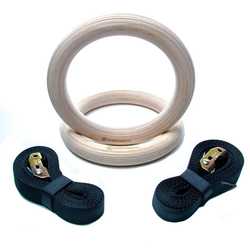
Single-Leg Knee Tuck
The next stage in TRX front lever progression is single-leg knee tuck. At this stage, extend one leg while keeping the other tucked and close to the chest. As always, hold for about 10 seconds in this position.

Straddle Front Lever
The final stage before the full TRX front lever is the straddle front lever. At this stage, you fully extend your legs in a straddle pose. The wider apart the legs are, the easier the position will be.
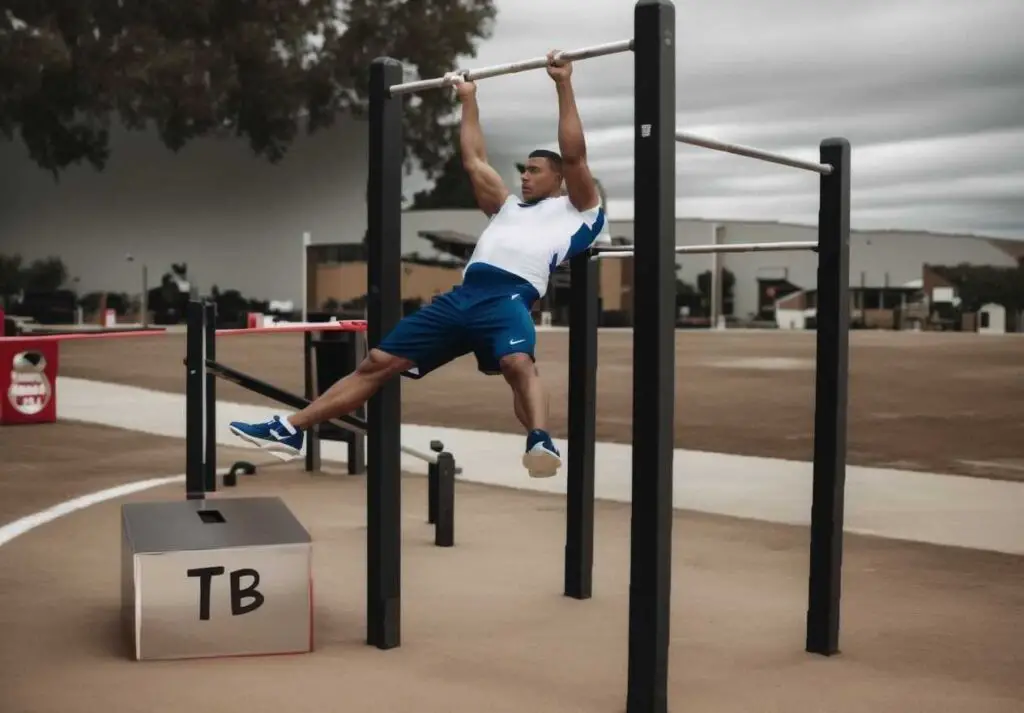
Finally, bring legs close together to form TRX front lever.
TRX Negative Front Lever
We can always try negative calisthenics as a technique to assist with challenging movements and gradually build strength for them.
The Negative Front Lever is a controlled descent from a horizontal, parallel-to-the-ground position. As you lower your body under control, you engage a symphony of muscles that contribute to mastering this movement toward the full TRX front lever.

Key features:
- Muscle Engagement: The TRX Negative Front Lever targets the same muscle groups as the full TRX Front Lever.
- Strength Development: The Negative Front Lever emphasizes the eccentric (lengthening) phase of contractions, which is a critical aspect of strength development.
- Body Control: Beyond muscle engagement, the Negative Front Lever hones your body control and spatial awareness, which contributes to full TRX front lever.
Decisive Physical Features in TRX Front Lever
Aside from the skill level and strength, some physical features related to each person’s body can affect how easily or hardly they can perform TRX front lever. On the other hand, natural body shape and measurements do affect the performance of this exercise. Here are some of these key factors:
- Total body weight.
- Body Measurements: such as arm length, torso length, and leg length, can impact how your body aligns and distributes weight during the TRX front lever. Individuals with longer arms may have an advantage in terms of leverage when pulling their body into position.
- Weight distribution: If you have heavy legs or the center of your body weight is toward legs, you need a steeper angle between the torso and arms to balance your center of weight. You need to grab handles at a position above your center of gravity.
Key Points about TRX Front Lever
TRX front lever or front lever with ring or bar is an advanced acrobatic exercise. It is not recommended for beginners until they master the ingredients of this complex move and build the suitable strength for it. Even advanced trainees require going through a progressive workout plan to be able to accomplish it.
The TRX Front Lever is a multi-joint exercise that challenges your core, back, and arm muscles, demanding a symphony of strength and balance. However, we can consider it as a primarily back exercise and fit it into a TRX pull up workout.
Related: Master the TRX muscle up.
